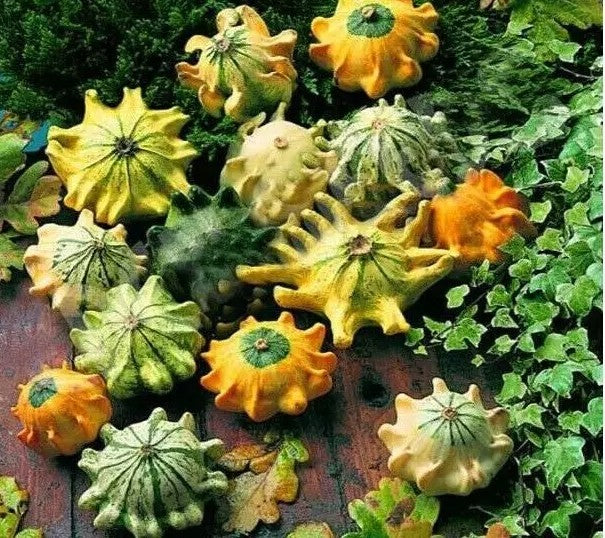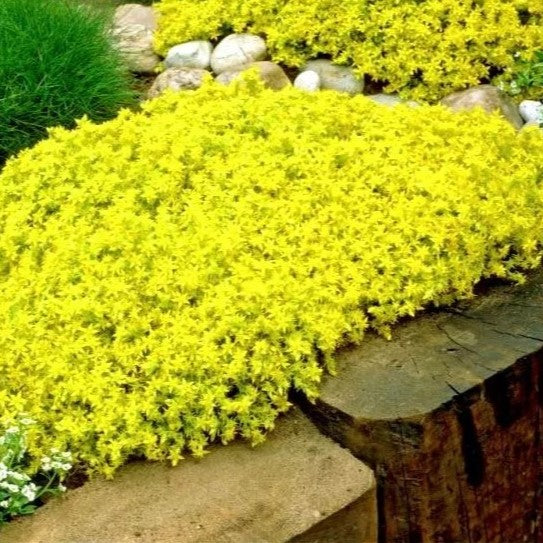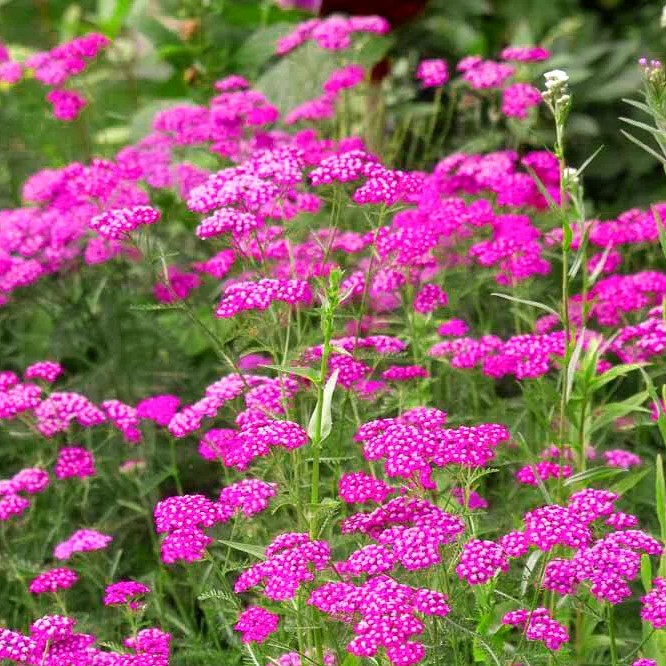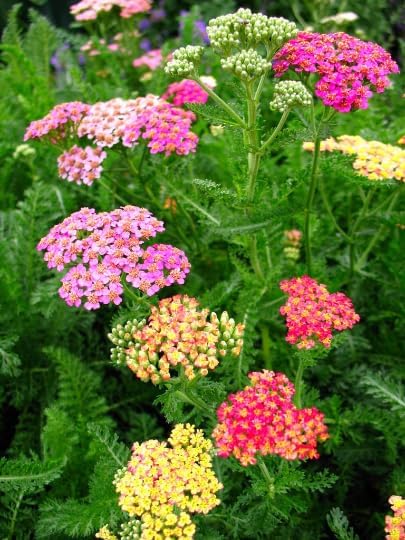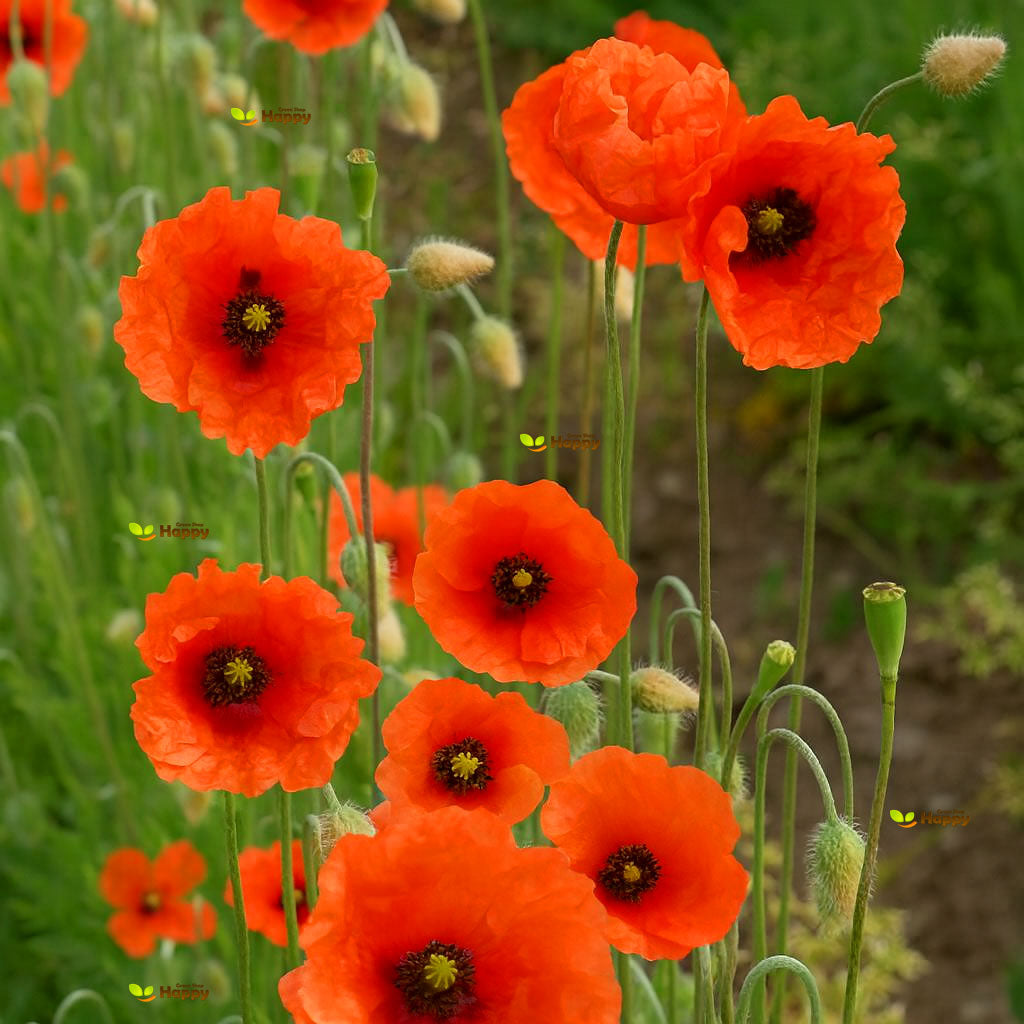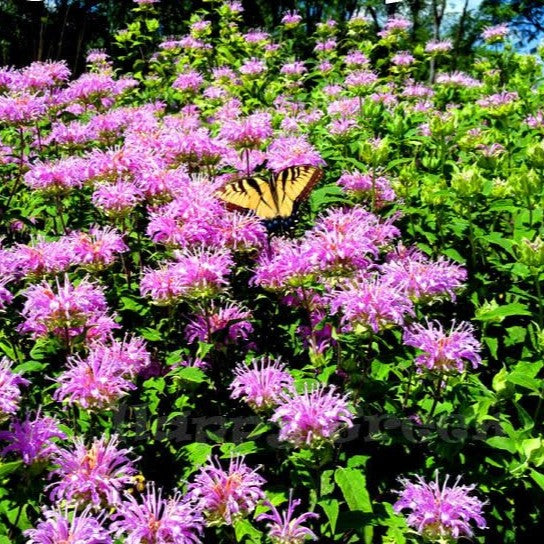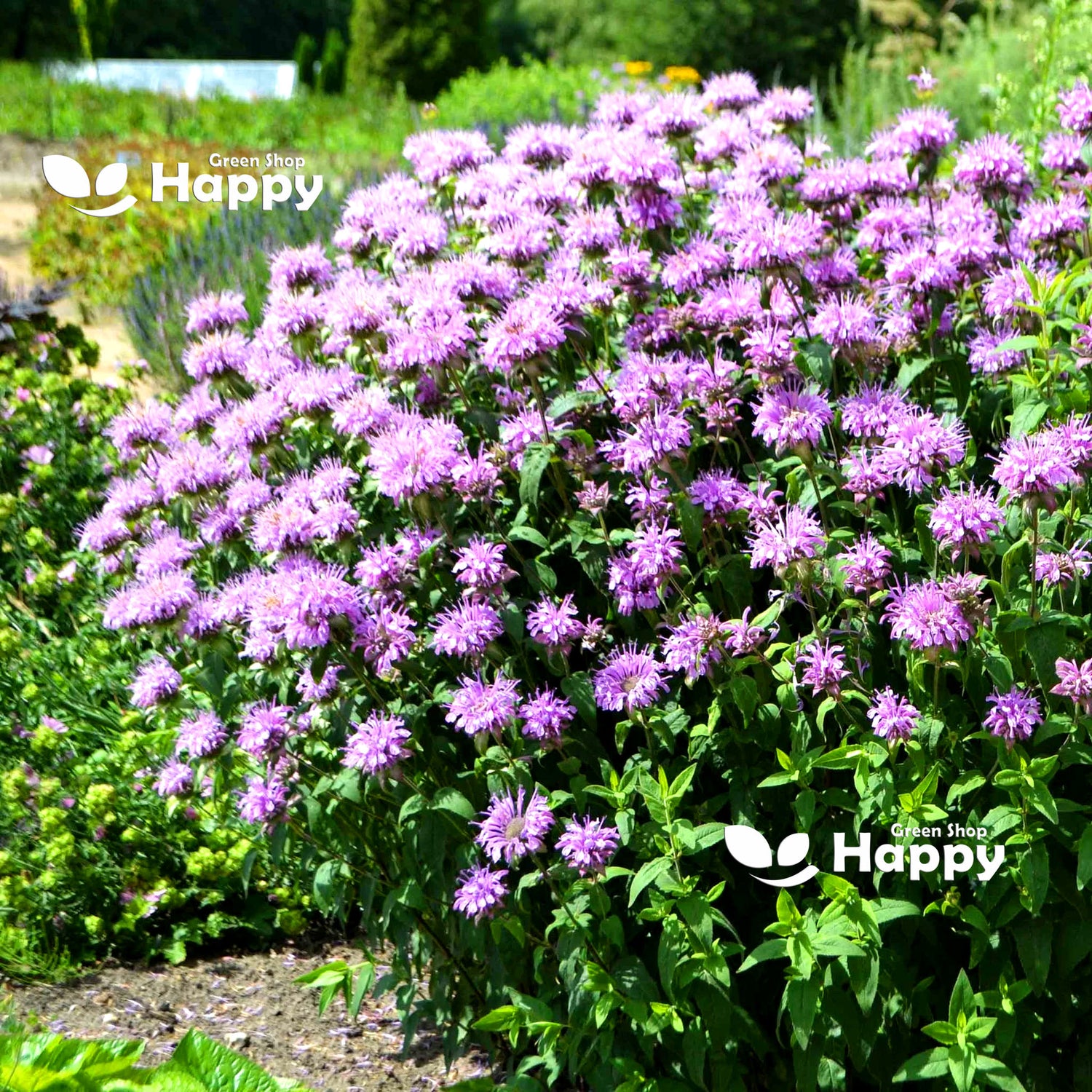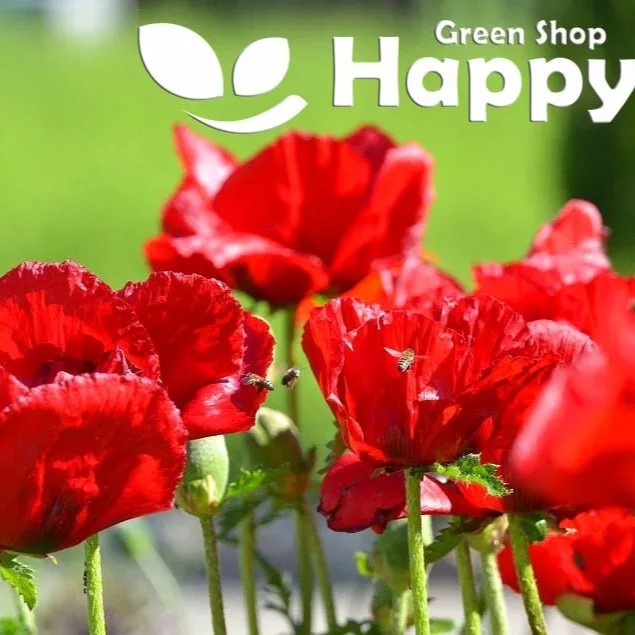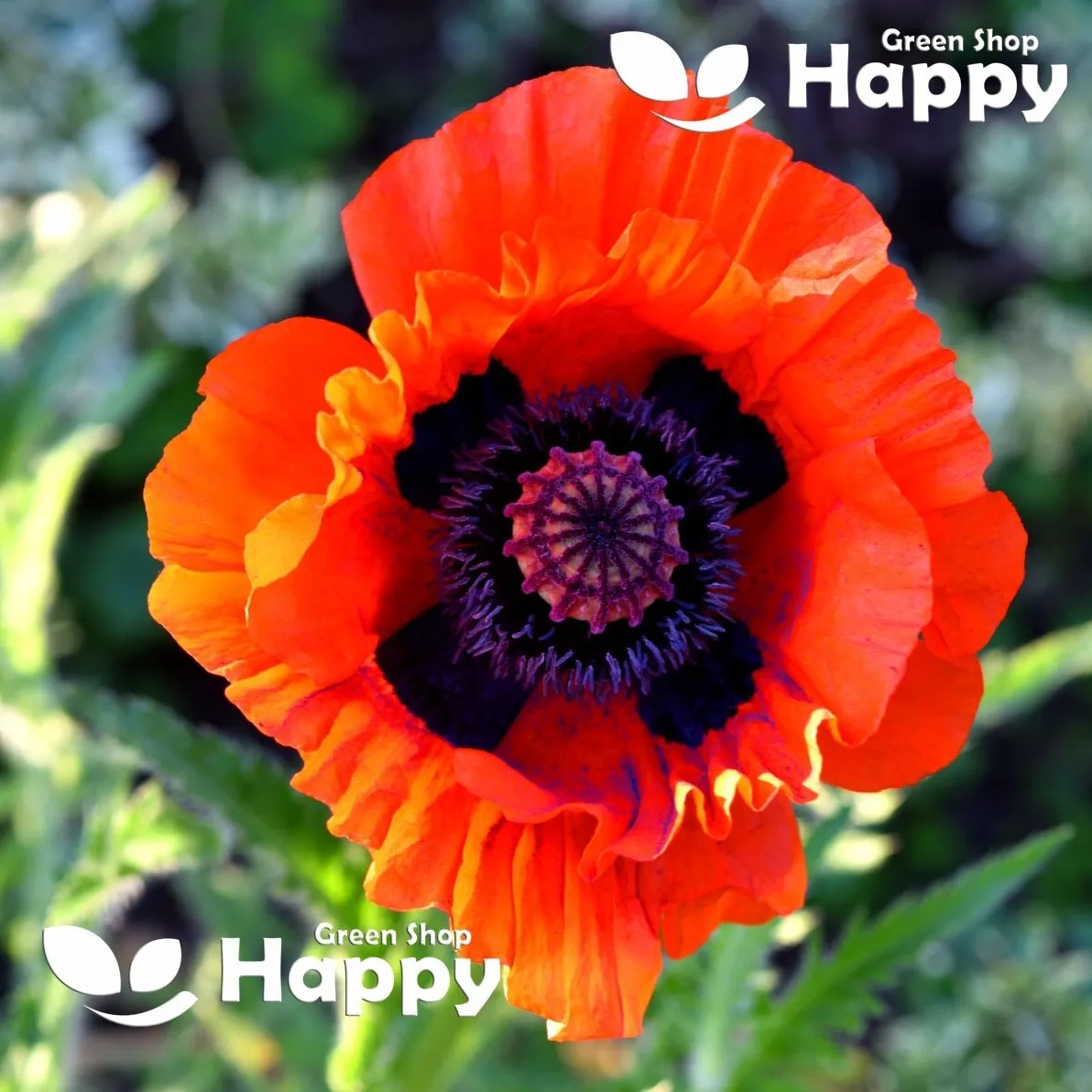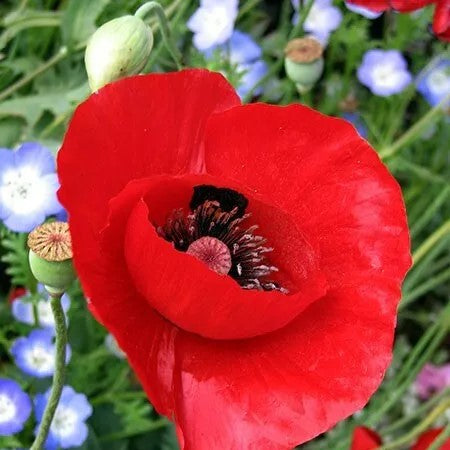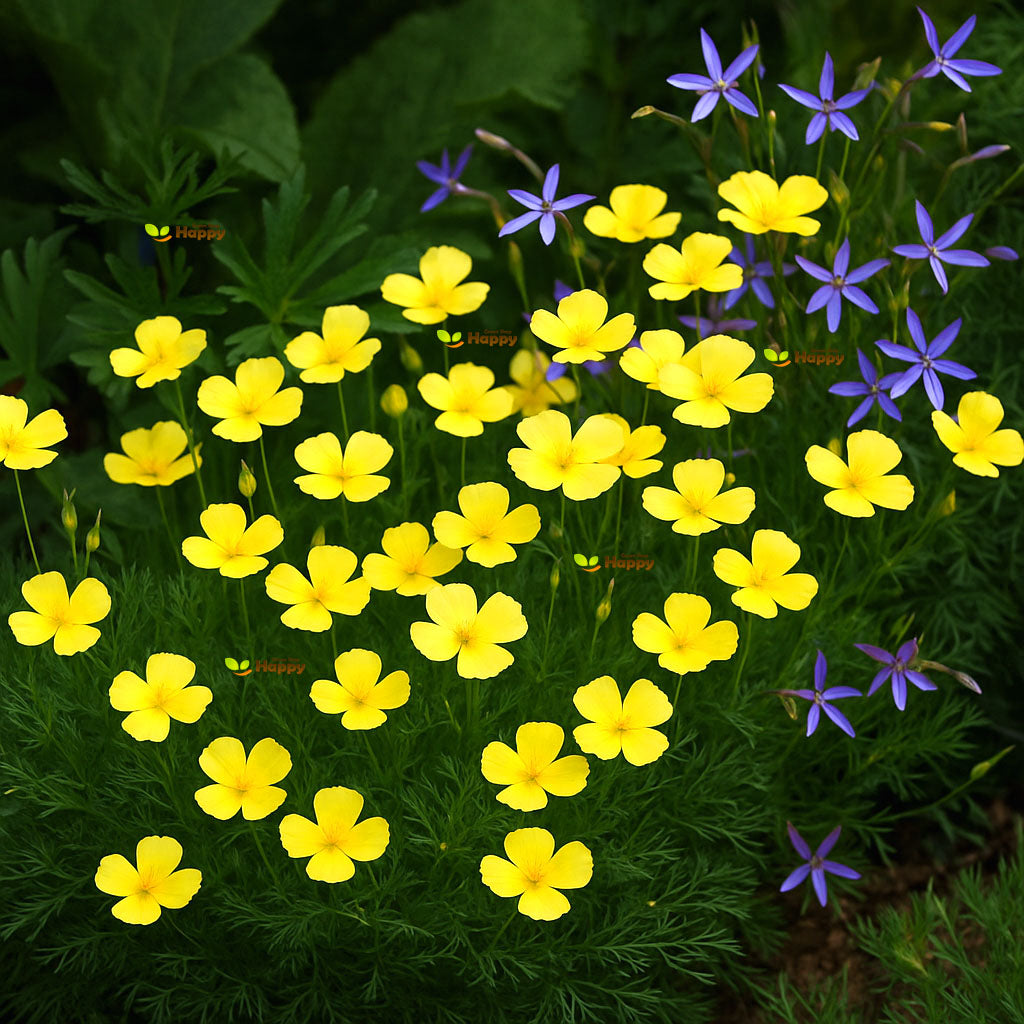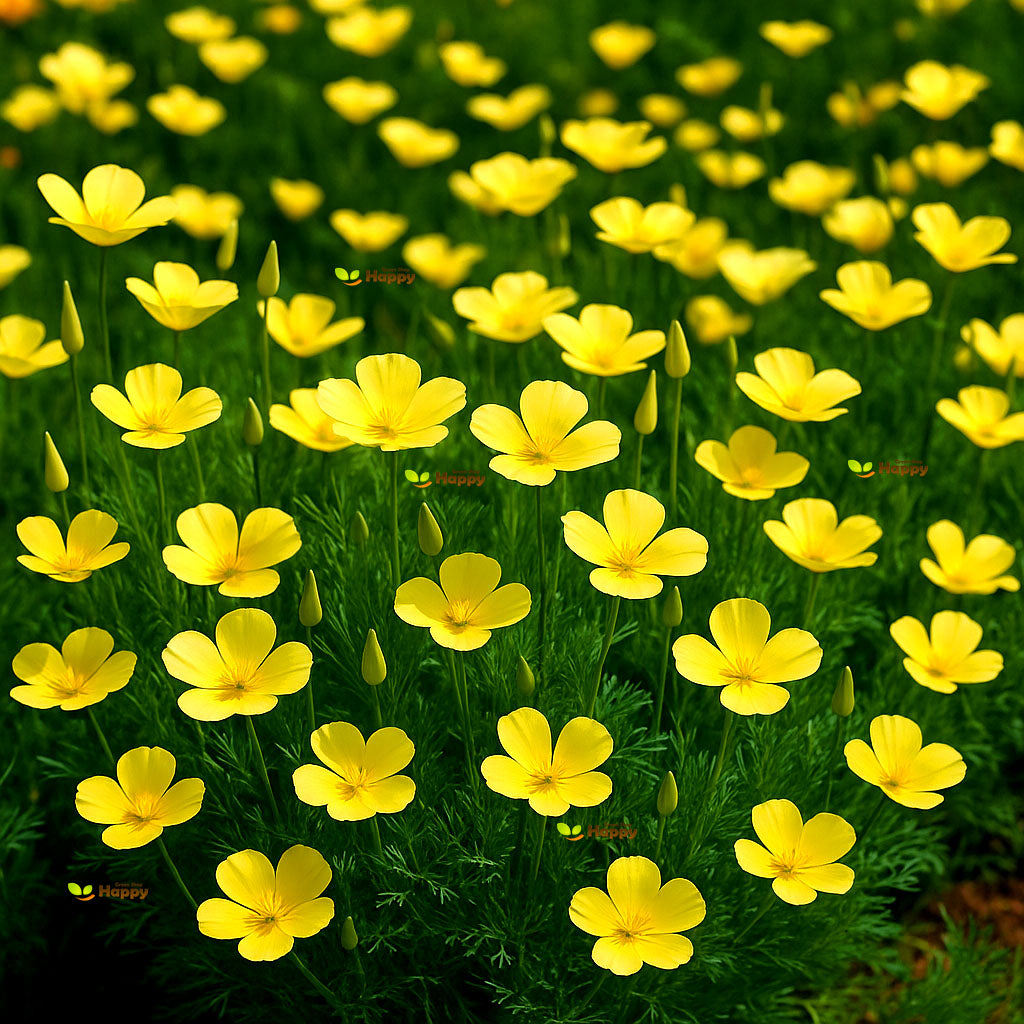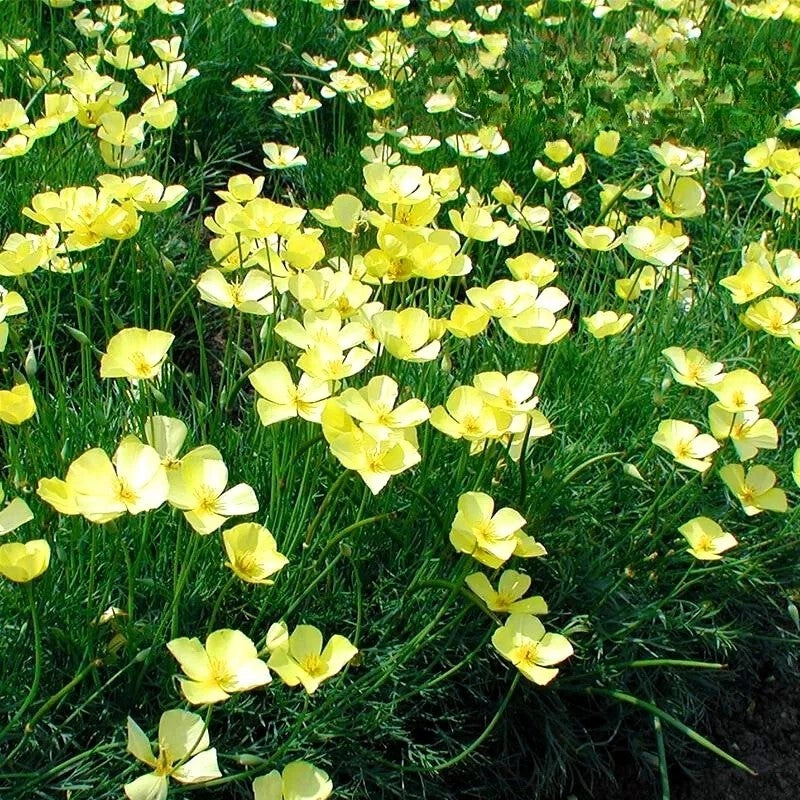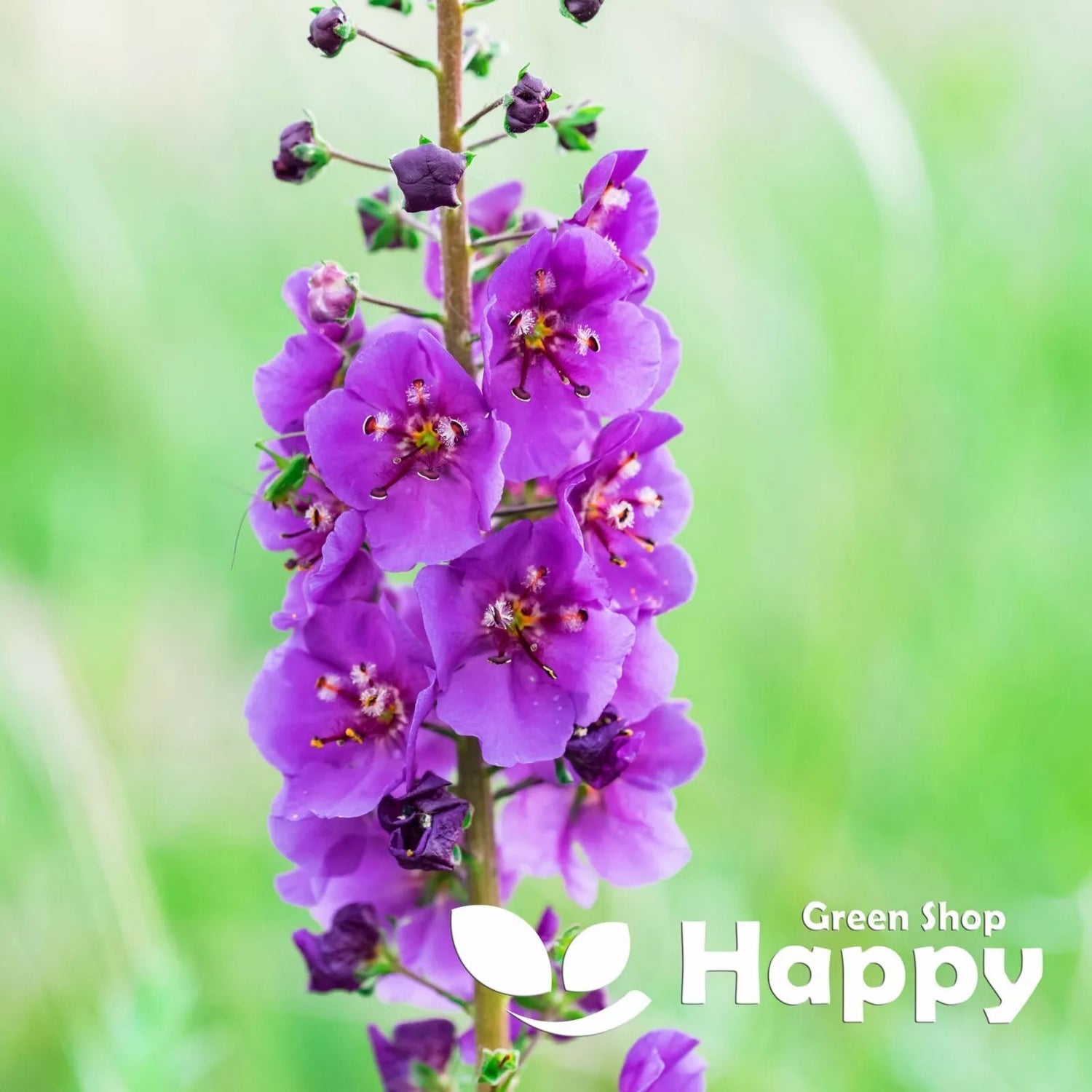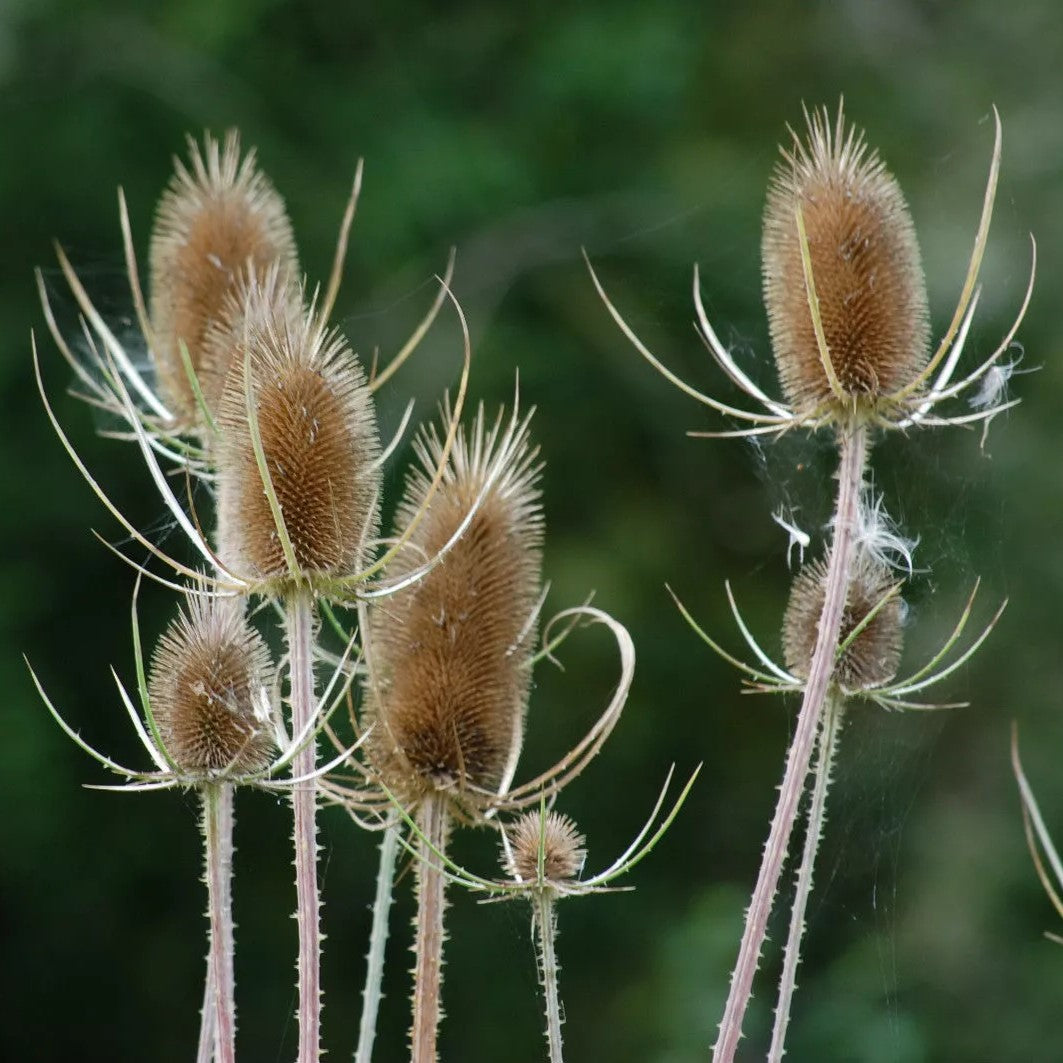Sort by:
121 products
121 products
Discover the uniqueness
Experience the delightful flavor and health benefits of Herbal Blends.
Yarrow ‘Milfoil Cerise Queen’ – Seeds (Achillea millefolium)
Yarrow ‘Milfoil Cerise Queen’ (Achillea millefolium) is a hardy perennial featuring flat-topped clusters of vibrant cerise flowers above fine, fern-like foliage. Blooming from early summer to autumn, it adds long-lasting color and texture to borders, rockeries, and wildflower gardens. Drought-tolerant, low-maintenance, and attractive to pollinators, this yarrow is ideal for sustainable gardens and mixed perennial beds.
Why Grow "Milfoil Cerise Queen"
-
Vibrant cerise, flat-topped flower clusters
-
Long flowering season from early summer to autumn
-
Hardy, drought-tolerant, and low-maintenance
-
Attracts bees, butterflies, and other pollinators
Key Features
-
Type: Perennial (Achillea millefolium)
-
Height: 40–60 cm
-
Flowering: Early summer to autumn
-
Position: Full sun
-
Uses: Borders, rockeries, wildflower gardens, pollinator-friendly beds
Ideal For
-
Adding bold color and texture to perennial borders
-
Sustainable and low-water gardens
-
Pollinator-friendly planting schemes
-
Cottage-style or naturalistic gardens
Sowing & Growing
-
Sow indoors: February–April in trays or pots
-
Sow outdoors: March–May directly in soil
-
Germination: 10–20 days at 18–22°C
-
Thin seedlings 30 cm apart
-
Prefers well-drained soil in full sun
-
Cut back spent flowers to encourage rebloom
Yarrow ‘Pastel’ Mix Seeds (Achillea millefolium)
A hardy and long-flowering perennial, Yarrow ‘Pastel’ Mix produces flat-topped clusters of delicate blooms in soft shades of pink, peach, and cream. Compact and drought-tolerant, it’s perfect for borders, cottage gardens, and wildflower meadows, attracting bees and butterflies.
What Makes It Special
-
Soft pastel blooms in pink, peach, and cream
-
Hardy, drought-tolerant, and long-flowering
-
Attracts pollinators, enhancing wildlife-friendly gardens
Key Features
-
Botanical name: Achillea millefolium
-
Hardy perennial
-
Height: 30–60 cm (12–24 in)
-
Bloom time: Summer
Ideal For
-
Borders, beds, and cottage gardens
-
Wildflower meadows and pollinator-friendly plantings
-
Containers and low-maintenance garden designs
Sowing
-
Sow indoors Feb–Apr or outdoors Mar–May
-
Cover lightly with soil and keep moist
-
Germination: 14–21 days at 15–20°C
-
Thin seedlings 25–30 cm apart
-
Flowers the first or second season after sowing
Wild Poppy Red – 20,000 Seeds (Papaver rhoeas)
Wild Poppy Red (Papaver rhoeas) is a classic annual producing vibrant scarlet-red blooms that create striking, naturalized displays. Perfect for meadows, borders, and large-scale plantings, it brings a splash of color to gardens from late spring to summer. Fast-growing, low-maintenance, and pollinator-friendly, it’s ideal for creating bold, natural landscapes.
Why Grow "Wild Poppy Red"
-
Bright, vibrant scarlet-red blooms
-
Fast-growing and easy to cultivate
-
Ideal for large-scale, naturalized plantings
-
Attracts bees and other pollinators
Key Features
-
Type: Annual (Papaver rhoeas)
-
Height: 60–90 cm
-
Flowering: May–July
-
Position: Full sun
-
Uses: Meadows, borders, large-scale plantings, pollinator-friendly gardens
Ideal For
-
Wildflower meadows and naturalized gardens
-
Bold borders and field displays
-
Pollinator-friendly landscapes
-
Low-maintenance, high-impact plantings
Sowing & Growing
-
Sow outdoors: March–May directly in prepared soil
-
Germination: 10–20 days at 15–20°C
-
Thin seedlings to 20–30 cm apart
-
Prefers full sun and well-drained soil
-
Deadhead to prolong flowering
Wild Poppy ‘Blindeyes’ Seeds (Papaver dobium)
Bring natural charm and bold color to your garden with Wild Poppy ‘Blindeyes’ (Papaver dobium). This hardy annual produces vibrant, single red blooms with dark centers, perfect for borders, wildflower meadows, and cutting gardens. Easy to grow and long-flowering, it attracts pollinators and adds a striking, naturalized look to any garden space.
How to Grow
-
Sow seeds directly outdoors in early spring or autumn.
-
Use well-drained soil in full sun.
-
Scatter seeds thinly and press lightly onto the soil; do not cover deeply.
-
Keep soil moist until germination (10–20 days).
-
Thin seedlings to 20–25 cm apart once established.
-
Deadhead spent flowers to encourage continuous blooming.
Key Features
-
Vibrant red single blooms with dark centers
-
Hardy annual, easy to grow and long-flowering
-
Ideal for borders, meadows, and cutting gardens
-
Attracts bees, butterflies, and other pollinators
-
Naturalized and cottage garden appeal
Ideal For
-
Flower borders and cottage gardens
-
Wildflower meadows and naturalized plantings
-
Cutting gardens for fresh bouquets
-
Pollinator-friendly landscapes
Sowing
-
Best time: Early spring or autumn directly outdoors
-
Germination: 10–20 days
-
Sow thinly, press lightly, do not cover deeply
-
Prefers full sun and well-drained soil
Quick Tip
-
For a continuous display, sow in drifts or clusters and remove spent blooms regularly.
Wild Bergamot – 1,300 Seeds (Monarda fistulosa)
Wild Bergamot (Monarda fistulosa) is a hardy perennial known for its fragrant lavender-pink blooms and aromatic foliage. A favorite of pollinators, it attracts bees, butterflies, and hummingbirds, making it perfect for pollinator gardens, borders, and wildflower meadows. Easy to grow and low-maintenance, it provides long-lasting color and texture from mid-summer to early autumn.
Why Grow "Wild Bergamot"
-
Fragrant lavender-pink blooms
-
Aromatic foliage with medicinal and culinary uses
-
Attracts bees, butterflies, and hummingbirds
-
Hardy and low-maintenance perennial
Key Features
-
Type: Perennial (Monarda fistulosa)
-
Height: 60–90 cm
-
Flowering: July–September
-
Position: Full sun to partial shade
-
Uses: Pollinator gardens, borders, wildflower meadows, cottage gardens
Ideal For
-
Pollinator-friendly gardens
-
Cottage-style or naturalized borders
-
Wildflower meadows
-
Herbal and sensory gardens
Sowing & Growing
-
Sow indoors: February–April in trays
-
Sow outdoors: April–May directly in prepared soil
-
Germination: 10–20 days at 18–22°C
-
Thin seedlings to 30–40 cm apart
-
Prefers well-drained soil and full sun
-
Deadhead to encourage prolonged flowering
Tulip Poppy Seeds (Papaver glaucum)
The Tulip Poppy (Papaver glaucum) is a striking annual with vibrant, cup-shaped flowers reminiscent of tulips. Available in shades of red, pink, and cream, these cheerful blooms bring a bold splash of color to borders, cottage gardens, and wildflower mixes. Ideal for naturalizing, cut flowers, or adding a classic poppy charm to your garden.
Why Grow Tulip Poppy
-
Unique tulip-shaped poppy blooms in vivid colors
-
Easy-to-grow, hardy annual
-
Great for borders, meadows, and cut flowers
Key Features
-
Botanical name: Papaver glaucum
-
Type: Hardy annual
-
Height: 40–60 cm
-
Spread: 20–30 cm
-
Flowering: Late spring–summer
-
Position: Full sun
-
Uses: Borders, cottage gardens, wildflower meadows, cut flowers
Sowing & Growing
-
Sow outdoors: March–May or September–October
-
Germination: 14–21 days at 15–20°C
-
Thin seedlings to 20–25 cm apart
-
Prefers full sun and well-drained soil
-
Deadhead for prolonged flowering or leave to self-seed
Tufted Poppy ‘Sundew’ Yellow – Golden Mini Blooms
Tufted Poppy ‘Sundew’ produces cheerful, bright yellow flowers on compact, tufted plants. Perfect for creating sunny borders, rock gardens, or naturalized areas, these hardy annuals add long-lasting color with minimal care.
What Makes It Special
-
Bright, sunny yellow blooms
-
Compact, tufted growth habit
-
Long-flowering and low-maintenance
-
Ideal for naturalized and rock gardens
Key Features
-
Annual plant
-
Grows 15–25 cm tall
-
Blooms from late spring to summer
-
Thrives in full sun and well-drained soil
-
Drought-tolerant and hardy
Ideal For
-
Garden borders and edges
-
Rock gardens and pathways
-
Wildflower and naturalized areas
-
Containers and sunny patios
Sowing
-
Sow directly outdoors after last frost
-
Plant seeds 0.3–0.5 cm deep
-
Germination: 7–14 days at 18–22°C
-
Space 15–20 cm apart
-
Water moderately and provide full sun
Temptress Flower Mixed Seeds (Verbascum phoeniceum)
A striking and colorful perennial, Temptress Flower Mixed produces tall spikes of vibrant blooms in shades of pink, purple, and white. Hardy and long-flowering, these plants attract pollinators and add architectural interest to borders, cottage gardens, and wildflower areas.
What Makes It Special
-
Eye-catching spikes of pink, purple, and white flowers
-
Hardy, long-lasting perennial with strong garden presence
-
Attracts bees and butterflies, supporting pollinator gardens
Key Features
-
Botanical name: Verbascum phoeniceum
-
Hardy perennial
-
Height: 60–120 cm (2–4 ft)
-
Bloom time: Mid-summer
Ideal For
-
Garden borders and cottage-style planting
-
Wildflower gardens and pollinator-friendly areas
-
Adding height and vertical interest to mixed plantings
Sowing
-
Sow indoors Feb–Apr or outdoors Mar–May
-
Cover lightly with soil and keep moist
-
Germination: 14–28 days at 18–20°C
-
Transplant seedlings 30–40 cm apart
-
Flowers the first or second year after sowing
Teasel Seeds (Dipsacus fullonum)
A striking wildflower, Teasel is known for its tall spiky flower heads that attract bees, butterflies, and especially goldfinches. Its architectural shape adds height and structure to wildlife-friendly gardens, meadows, and borders. Hardy and easy to grow, Teasel provides year-round interest with summer blooms and seed heads that last into winter.
What Makes It Special
-
Loved by pollinators and seed-eating birds, especially goldfinches
-
Tall, architectural plant for borders and wild gardens
-
Long-lasting seed heads provide winter garden interest
Key Features
-
Botanical name: Dipsacus fullonum
-
Hardy biennial/wildflower
-
Height: 150–200 cm (5–6 ft)
-
Bloom time: Mid to late summer
Ideal For
-
Wildlife and pollinator-friendly gardens
-
Wildflower meadows and natural planting schemes
-
Adding height and structure to borders
Sowing
-
Sow outdoors Mar–Jun or Sep–Oct directly into prepared soil
-
Cover lightly and keep moist until germination
-
Germination: 14–28 days depending on conditions
-
Thin seedlings to 30–45 cm apart
-
Flowers in the second year after sowing
Showing 9/121



